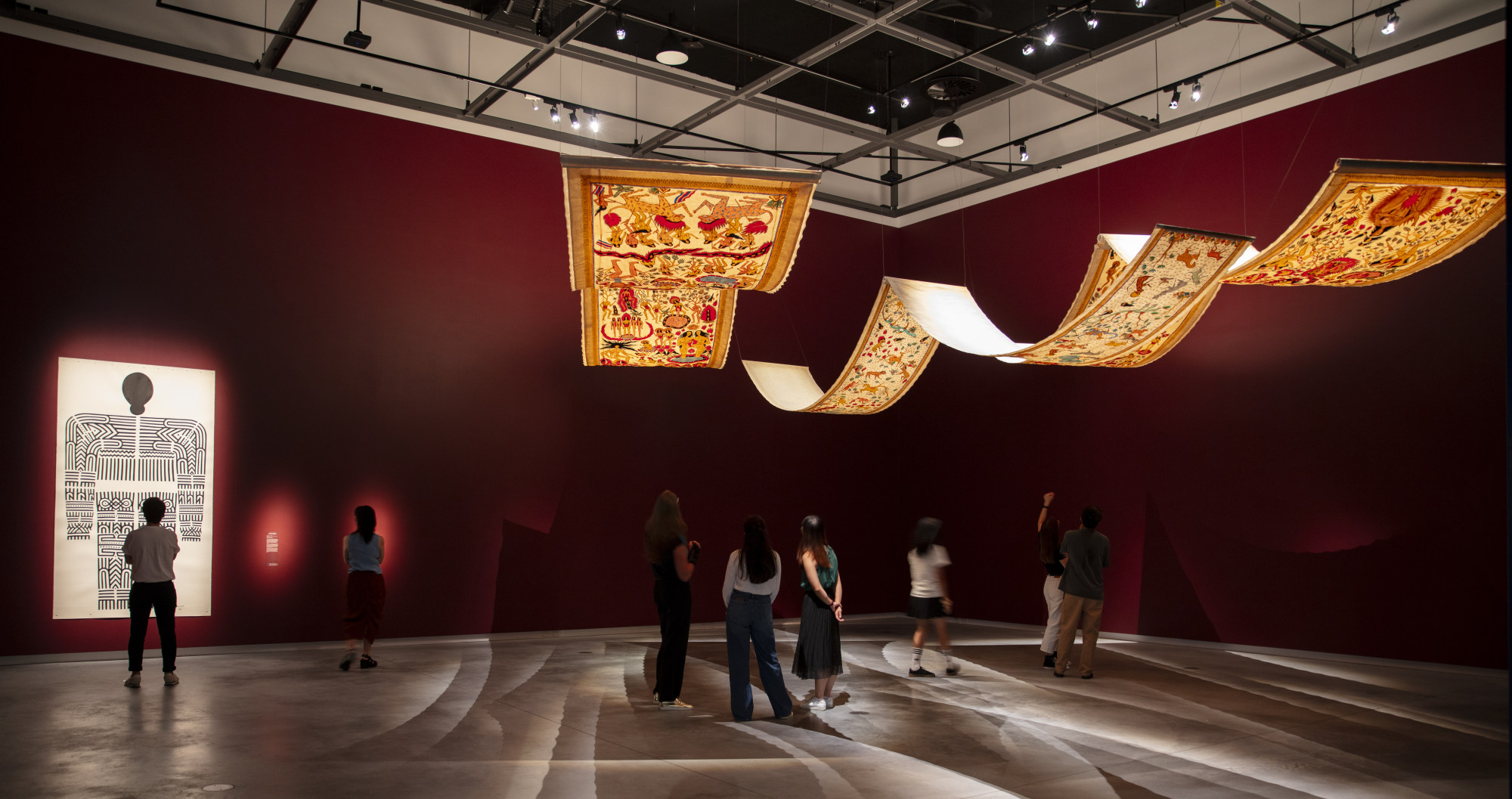“Ten Thousand Suns” features many characteristics of the pair’s previous exhibitions: brightly coloured walls; an elaborate curatorial statement; an interest in textile art, which historically would have been labelled craft; and a long list of artists (96 from 53 countries and territories).
Yet “Ten Thousand Suns” feels fresh and exciting. This is largely thanks to the group of artists Costinas and Guerrero have assembled, which includes a handful of familiar names from their shows at Para Site – among them Hongkongers Trevor Yeung and the late Irene Chou – and few big names.

By showing work from a group of relative unknowns in “Ten Thousand Suns”, Costinas and Guerrero have given even the most jaded gallery-goer the chance to discover something new.
More importantly, they have also allowed artists working in the margins to present work that questions the mainstream, which is the mission of the biennale.
The core idea that the curators want to challenge is that humanity is doomed because of climate change, the collapse of democracy or the countless other crises rocking the world.
At times, “Ten Thousand Suns” appears to offer a sparkling distraction from today’s geopolitical catastrophes: Brazilian artist Alberto Pitta’s vibrant fabrics cascading from the ceiling of White Bay Power Station seem designed to lift people’s mood, for example.

Yet the exhibition is not an exercise in escapism. It suggests that crises are not new but constant; that people are resilient; and that beauty and joy can emerge from horror.
If you look into the inspiration behind even the brightest artworks, you often discover dark histories.
Pitta uses his kaleidoscopic fabrics to make costumes for Brazilian carnivals. These festivals are now famous as some of the world’s largest parties, but they are the product of Brazil’s past as a centre of the slave trade, which led to the fusion of African, Native American and Catholic cultures that defines carnival today.
Close to Pitta’s textiles hangs Aboriginal and Torres Strait Islander artist Dylan Mooney’s portrait of activist Malcolm Cole leading the first Aboriginal float at the 1988 Sydney Gay and Lesbian Mardi Gras.

For the event, Cole dressed up as James Cook, the British explorer who colonised Australia – thus mocking the idea that the British discovered the country.
Cole appears grinning and defiant in Mooney’s work, which stands 16 metres (52.5ft) tall, making it both a monument to Cole and a riposte to the towering statues of Cook that still stand around Australia.
Another portrait of Cole, this one a photograph by Chinese-Australian artist William Yang, is exhibited at another venue, the Chau Chak Wing Museum at the University of Sydney. The repeated image of Cole is one of several through lines that Costinas and Guerrero have used to tie together the six galleries hosting “Ten Thousand Suns” into one coherent show.
At the same time, each of the venues can stand alone. The Art Gallery of New South Wales is focused on artists whose work responds to the threat of nuclear war.
Shooting star: the rapid rise of Hong Kong photographer Leungmo
Shooting star: the rapid rise of Hong Kong photographer Leungmo
At UNSW Galleries, there is one of the biennale’s most successful and original displays: two rooms that explore long-standing links between Australia and the Middle East. Many of these pieces focus on cameleers who were shipped from British-controlled South Asia to work on farms in the Australian outback in the 1800s.
Afghan-Australian artist Elyas Alavi has made a neon installation out of lutelike rubab musical instruments similar to those the cameleers played, as well as collages that reveal similarities between the deserts of Australia and Afghanistan.
A few metres away hangs a portrait of a camel by the deaf and non-verbal Aboriginal artist Doreen Chapman, whose ancestral lands in northern Australia are now home to feral camels descended from those imported in the 19th century. First Nations artists are positioned prominently throughout, particularly those, like Chapman, who mix their own culture with others.
Another artist who does this is Kaylene Whiskey, who has made an installation of a room-sized television populated with an Aboriginal Wonder Woman and figures from pop culture who inspire her, including Dolly Parton, Tina Turner and David Bowie.

Chapman and Whiskey’s art shows that indigenous cultures do not exist in isolation, as they are often presented in galleries, but have past and present connections with other societies.
“Ten Thousand Suns” is packed with art that initially seems to tell a unique story from one corner of the world, but on closer examination reveals links between individuals, communities and countries.
This collision of the local and the global is what Costinas and Guerrero hoped to convey with the title of the biennale exhibition. “Ten thousand” hints at the diversity of artists in the show, while the sun is one of the few truly universal reference points. Across cultures, the sun is celebrated as a life-giving source of light and warmth. It dispels the darkness – as does this exhibition.
“24th Sydney Biennale – Ten Thousand Suns”, various locations in Sydney. Until June 10.

